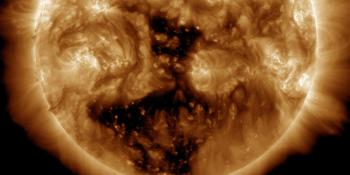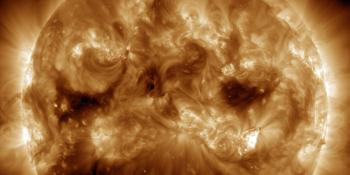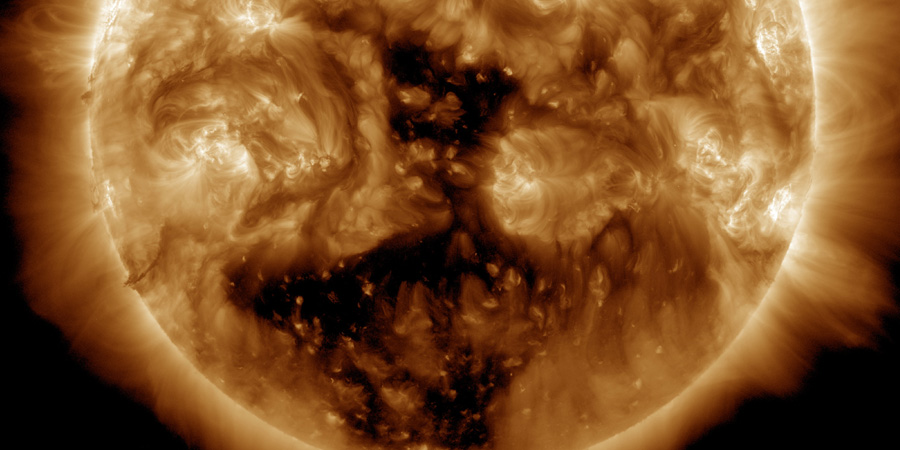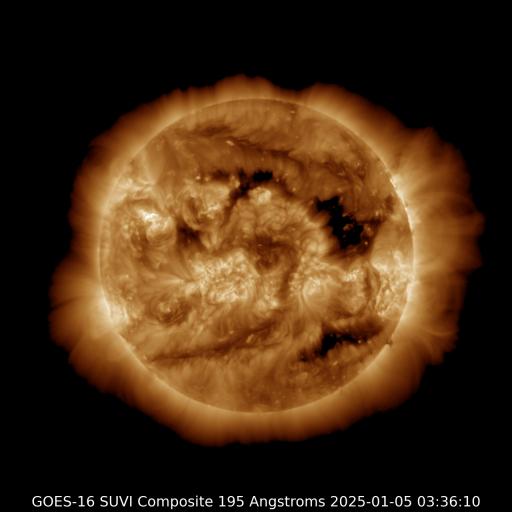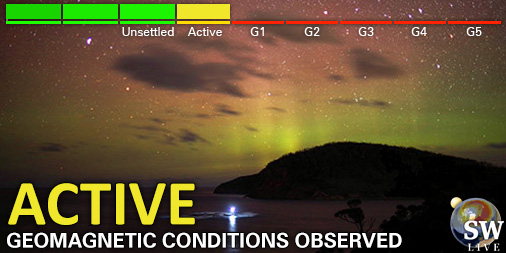Viewing archive of Sunday, 13 May 2012
Solar activity report
Prepared by the NOAA © SWPC and processed by SpaceWeatherLive.com
Joint USAF/NOAA Report of Solar and Geophysical Activity
SDF Number 134 Issued at 2200Z on 13 May 2012IA. Analysis of Solar Active Regions and Activity from 12-2100Z to 13-2100Z
IB. Solar Activity Forecast
IIA. Geophysical Activity Summary 12-2100Z to 13-2100Z
IIB. Geophysical Activity Forecast
III. Event Probabilities 14 May to 16 May
| Class M | 35% | 35% | 35% |
| Class X | 05% | 05% | 05% |
| Proton | 05% | 05% | 05% |
| PCAF | Green | ||
IV. Penticton 10.7 cm Flux
Observed 13 May 131 Predicted 14 May-16 May 130/130/130 90 Day Mean 13 May 114
V. Geomagnetic A Indices
Observed Afr/Ap 12 May 008/010 Estimated Afr/Ap 13 May 010/010 Predicted Afr/Ap 14 May-16 May 007/010-014/012-006/008
VI. Geomagnetic Activity Probabilities 14 May to 16 May
| A. Middle Latitudes | |||
|---|---|---|---|
| Active | 20% | 30% | 10% |
| Minor storm | 05% | 10% | 01% |
| Major-severe storm | 01% | 01% | 01% |
| B. High Latitudes | |||
|---|---|---|---|
| Active | 30% | 35% | 20% |
| Minor storm | 15% | 25% | 10% |
| Major-severe storm | 01% | 10% | 01% |
All times in UTC
Current data suggests there is a slight possibility for aurora to appear at the following high latitude regions in the near future
NuukSodankylä, Utsjoki
Reykjavik
Tromsø
Kiruna
Latest news
Latest forum messages
Support SpaceWeatherLive.com!
A lot of people come to SpaceWeatherLive to follow the Sun's activity or if there is aurora to be seen, but with more traffic comes higher server costs. Consider a donation if you enjoy SpaceWeatherLive so we can keep the website online!

Latest alerts
Monday, 24 March 2025
Coronal hole faces Earth
The anticipated strong G3 geomagnetic storm watch never materialized as the coronal mass ejection that was supposed to arrive early yesterday didn't arrive until today just past midnight UTC. The impact was very lackluster with the Bt (total strength of the IMF) increasing to a moderate 15nT at best and the solar wind speed reaching just 420km/s. A far cry from the anticipated 700 to 800km/s. That once again goes to show how hard it is to forecast space weather events and any resulting geomagnetic conditions. We remain under the influence of the CME and high latitude sky watchers should remain alert for some nice aurora displays but middle latitude sky watchers will probably have to wait for the next opportunity.
Read more13:55 UTC - Coronal hole
A transequatorial coronal hole is facing Earth. Enhanced solar wind could arrive in ~3 days
02:45 UTC - Geomagnetic activity
Active geomagnetic conditions (Kp4) Threshold Reached: 02:33 UTC
Space weather facts
| Last X-flare | 2025/02/23 | X2.0 |
| Last M-flare | 2025/03/21 | M1.2 |
| Last geomagnetic storm | 2025/03/22 | Kp6- (G2) |
| Spotless days | |
|---|---|
| Last spotless day | 2022/06/08 |
| Monthly mean Sunspot Number | |
|---|---|
| February 2025 | 154.6 +17.6 |
| March 2025 | 140.6 -14 |
| Last 30 days | 138 -16.1 |
